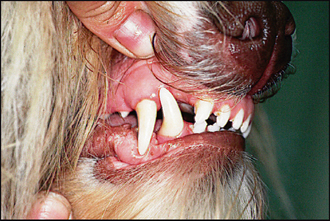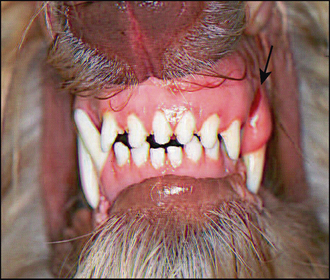26 Rubber toy technique and orthodontic appliances
ORAL EXAMINATION – CONSCIOUS
5. Right lower canine flared out laterally and fitted in the diastema between 103 and 104 (Fig. 26.1)
6. Left lower canine upright in position, occluding with hard palate medial to the upper canine, causing a non-ulcerated indentation and hindering full mouth closure (Fig. 26.2)
7. Diastema between 203 and 204 of adequate size for 304 to fit (if it was moved slightly rostrally and laterally).
THEORY REFRESHER
• The upper canines are caudal to but touching the mandibular canines, level with the lower canines, or rostral to the mandibular canines.
• The mandibular premolars are caudally displaced relative to the maxillary premolars, disrupting the ‘pinking shear’ effect. The degree of displacement is similar to that of the incisors and canines.





